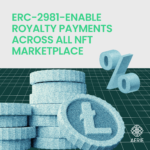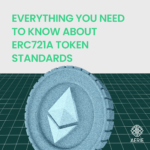A systematic literature review of blockchain cyber security
Abstract
“Since the publication of Satoshi Nakamoto’s white paper on Bitcoin in 2008, blockchain has (slowly) become one of the most frequently discussed methods for securing data storage and transfer through decentralized, trustless, peer-to-peer systems. This research identifies peer-reviewed literature that seeks to utilize blockchain for cyber security purposes and presents a systematic analysis of the most frequently adopted blockchain security applications. Our findings show that the Internet of Things (IoT) lends itself well to novel blockchain applications, as do networks and machine visualization, public-key cryptography, web applications, certification schemes and the secure storage of Personally Identifiable Information (PII). This timely systematic review also sheds light on future directions of research, education and practices in the blockchain and cyber security space, such as security of blockchain in IoT, security of blockchain for AI data, and sidechain security.
Blockchain features can be deployed to solve problems related to the security of devices, networks and their users.
1. Introduction
As a cryptographic-based distributed ledger, blockchain technology [1,2] enables trusted transactions among untrusted participants in the network. Since the introduction of the first Bitcoin blockchain in 2008 [3], various blockchain systems, such as Ethereum [4,5] and Hyperledger Fabric [6], have emerged with public and private accessibility outside of existing fiat currencies and electronic voucher systems. Recently, blockchain technology has also been the subject of an increasing number of scientific researches [[7], [8], [9], [10]] and has raised significant interest among researchers, developers, and industry practitioners due to its unique trust and security characteristics.
There is no doubt that the popularity of blockchain has increased worldwide. More than simply becoming popular, it has made a lasting impact on the world [11]. For example, it has been commercially adopted [12], influenced world currency markets [13], facilitated the proliferation of illicit dark web marketplaces. It also has been a significant factor affecting the proliferation of financially driven cyber-attacks [14], such as ransomware [15] and denial of service [16] against retailers and other online organizations. In fact, the implementation and use of blockchain have far surpassed its original purpose as the backbone of the world’s first decentralized cryptocurrency. The value of a trustless, decentralized ledger that carries historic immutability has been recognized by other industries looking to applying the core concepts to the existing business processes. The unique properties of the blockchain technology make its application an attractive idea for many business areas, such as banking [17], logistics [18], the pharmaceutical industry [19], smart contracts [20,21], and most importantly, in the context of this paper, cyber security [22,23].
Most notably, there is an emerging trend beyond cryptocurrency payments: the blockchain could enable a new breed of decentralized applications without intermediaries and serve as the foundation for key elements of Internet security infrastructures. Hence, it is crucial to identify the existing researches specifically related to the application of blockchain to the problem of cyber security, in order to address how emerging technologies can offer solutions to mitigate emerging threats. To identify what research has already been conducted in relation to blockchain and cyber security, it is necessary to map out relevant papers and scholarly works systematically. This paper seeks to focus on existing literature concerning the use of blockchain as a supporting technology for cyber security applications, including areas of business related to privacy, security, integrity and accountability of data, as well as its the use in networked devices, such as the Internet of Things (IoT). Our overarching goal is to provide a community-driven initiation for a better study of blockchain and cyber security that explores the interplay between the two frequently discussed fields. Toward this goal, we will critically examine existing works and studies on blockchain cyber security and use our insights to develop new directions…”
PLEASE CLICK HERE TO READ THE FULL ARTICLE









